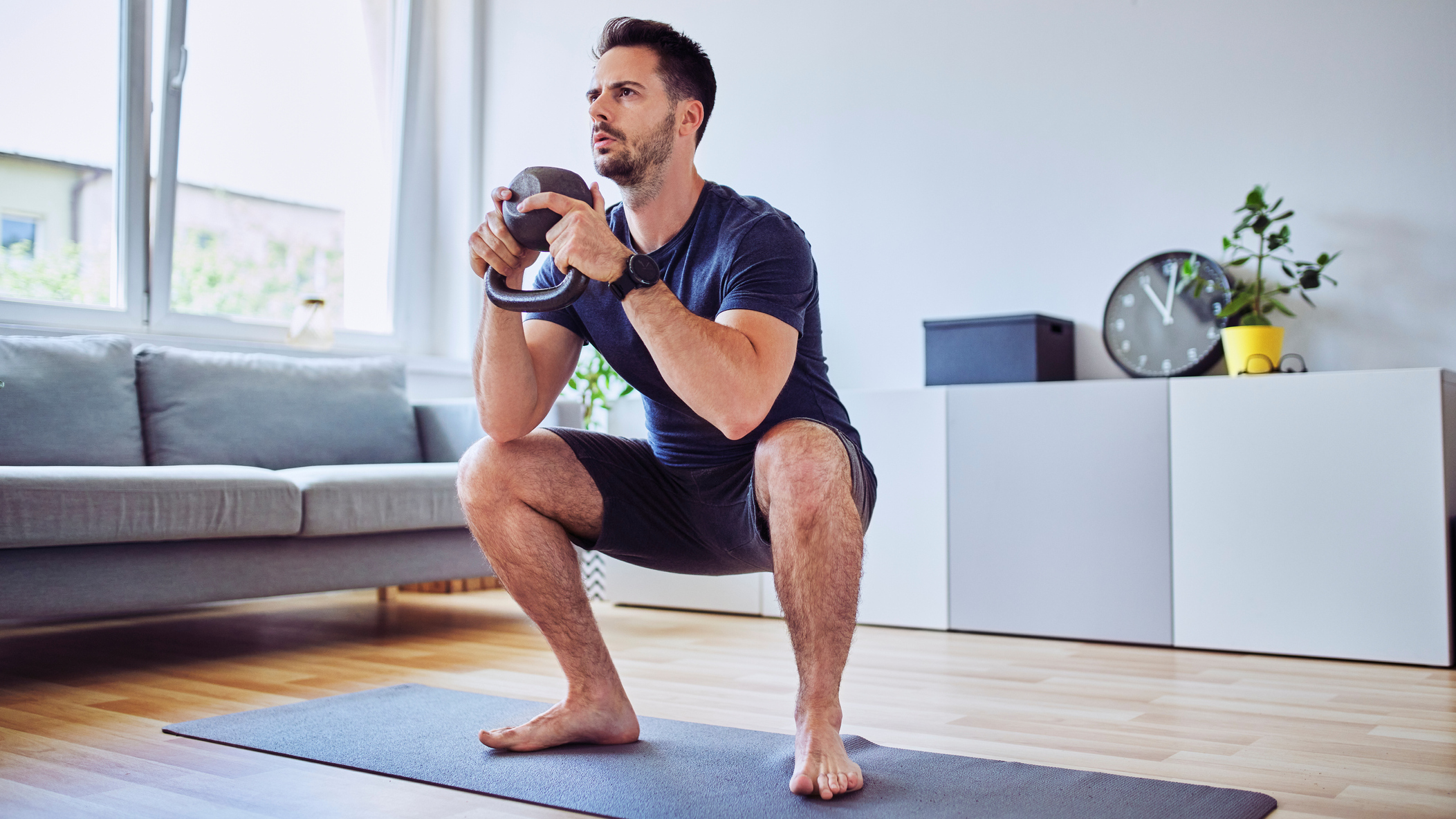
Runners gonna run, but if they want to run faster and avoid having to stop because of an injury they should add running-specific strength training to their week.
“Endurance runners of all abilities can benefit from strength and conditioning, and it’s a lot simpler than people might think,” says Lewis Moses, a qualified athletics coach and founder of New Levels Coaching.
There’s no need to spring for a gym membership either. “A simple home workout is a great way for runners to get started. It’s safer than going straight into heavy lifting, but it still has great benefits including improving running performance and economy, reducing the risk of injury by strengthening key areas of the body and improved body composition—an increase in muscle mass and reduced body fat.
“It’s important to note that it’s very unlikely that runners will ‘bulk up’ from this type of strength work, which is often a worry when people consider strength training.”
Moses has created a strength workout for runners that requires just a mini looped resistance band and a free weight. The former is an affordable piece of equipment which is well worth investing in, and we have plenty of options in our guide to the best resistance bands. Home free weights cost significantly more, but if you can’t find something that fits your budget in our selection of the best dumbbells or best kettlebells, you can still complete Moses workout below without weights. If you find the unweighted squat and lunge don't challenge you, slow the movement down to increase the difficulty.
We also have lots of other no-equipment sessions for runners, such as this home workout for runners, these core workouts for runners, running exercises for beginners and these leg exercises for runners.
Strength Exercises For Runners
1 Banded clamshell
Sets 3 Time 30sec each side
How Lie on your side with your knees bent at 90°. Place a short resistance band around your thighs just above your knees. Keeping your feet together and your pelvis still, lift your top knee away from your bottom knee. Pause for two seconds when your knees are as far apart as the band allows, then return to the starting position.
Why “This targets the gluteus medius muscles, which are located on the side of the hips,” says Moses. “By strengthening these areas, runners reduce the risk of injuries.”
2 Dead bug
Sets 3 Time 30-45sec
How Lie on your back with your arms extended towards the ceiling and your legs raised so your knees and hips are at 90°. Brace your core, then simultaneously lower one arm behind you until it’s just above the floor and extend and lower the opposite leg until it’s also just above the floor. Return to the starting position, then repeat with the opposite limbs.
Why “This exercise improves core stability and strengthens the muscles of the abdominals, hips and lower back, which can lead to improved running posture,” says Moses.
3 Goblet squat
Sets 4 Reps 8-12
How Stand with your feet shoulder-width apart and your toes turned out slightly, holding a dumbbell or kettlebell by your chest with your elbows tucked into your ribs. Push your hips back and bend your knees to lower until your thighs are below parallel with the ground. Pause, then extend your legs to stand back up. Your chest should remain facing forward throughout.
Why “This exercise helps runners to improve lower body strength and stability, as well as core strength,” says Moses.
4 Reverse lunge
Sets 3 Reps 8-10 each side
How Stand with your feet hip-width apart and your hands on your hips. Take a step back with one foot and, keeping your chest upright, lower until both knees are at 90°. At this point, your front knee should be directly above your ankle, and your back knee should be just above the floor. Push through your front foot to return to a standing position, then repeat on the other leg. You can hold dumbbells to make this exercise more challenging.
Why “This exercise primarily targets the quadriceps, hamstrings and glutes, and can be performed with or without weights,” says Moses. Newcomers to strength training should try it with just their bodyweight at first.
“It's a great exercise to include in lower-body workouts because it targets multiple muscle groups and helps improve balance and stability on each leg, which is crucial for runners.”
5 Single-leg calf raise
Sets 3 Reps 10-16 each side
How Stand on one leg, with the ball of your planted foot on a raised surface like a weight plate or step. Slowly lower your heel below the level of the raised surface, then use your calf muscle to lift your heel as high as you can.
Why “Calf raises particularly target the gastrocnemius muscle [in the calf],” says Moses. “The beauty of this exercise is it can be performed pretty much anywhere and requires little to no equipment, making it an easy addition to a home or gym workout routine.
“Performing it off a step or raised surface increases the range of motion and makes the exercise more challenging.”







